April 30, 2010
ゴールデンウィーク Golden Week
みなさん、こんにちは!
今日4月29日から日本ではゴールデンウィークが始まります。
ゴールデンウィークとは4月末~5月初めに祝日が続く週のことです。
週末や有給休暇と合わせると1週間~2週間のおやすみがとれます。
4月29日 昭和天皇の誕生日
5月 3日 憲法記念日(憲法が施行された日)
5月 4日 みどりの日(自然に親しみそして感謝する日)
5月 5日 こどもの日(子供の幸せを願う日)
words & phrases -
ゴールデンウィーク: Golden Week,
4月(がつ)末(まつ): the end of April
5月初(はじ)め: early May
祝日(しゅくじつ): national holiday
続(つづ)く: successive
AはBのことです: A is B, explain what A is B
週末(しゅうまつ): weekend
有給(ゆうきゅう)休暇(きゅうか): paid holiday
合(あ)わせる: put together
おやすみがとれる: can take a leave
昭和(しょうわ)天皇(てんのう): Showa Emperor
誕生日(たんじょうび): birthday
憲法(けんぽう)記念日(きねんび): Constitution Memorial Day
: day for commemoration the enforcement of the Constitution and
reaffirming hope in the growth of the nation.(on May.3rd, 1947.)
施行(せこう): enforcement
自然(しぜん)に親(した)しむ: close contact with nature
感謝(かんしゃ)する: appreciate
子供(こども)の幸(しあわ)せを願(ねが)う: desire children’s happiness
Golden Week
The Golden Week is a collection of four national holidays within seven days. In combination with well placed weekends, the Golden Week becomes one of Japan's three busiest holiday seasons, besides New Year and the Obon week.
Trains, airports and sightseeing spots get very crowded during Golden Week, and accommodation in tourist areas can get booked out well in advance.
The national holidays making up the Golden Week are:
April 29 : Showa Day (Showa no hi)
April 29 is the birthday of former Emperor Showa, who died in the year 1989. Until 2006, Greenery Day (see May 4) used to be celebrated on this day.
May 3 : Constitution Day (Kenpo kinenbi)
On this day in 1947, the new post war constitution was put into effect.
May 4 : Greenery Day (Midori no hi)
Until 2006, Greenery Day used to be celebrated on April 29, the birthday of former Emperor Showa. The day is dedicated to the environment and nature, because the emperor loved plants and nature. Before being declared Greenery Day, May 4 used to be a national holiday due to a law, which declares a day, that falls between two national holidays, a national holiday.
May 5 : Children's Day (Kodomo no hi)
The Boy's Festival (Tango no Sekku) is celebrated on this day. Families pray for the health and future success of their sons by hanging up carp streamers and displaying samurai dolls, both symbolizing strength, power and success in life. The Girl's Festival, by the way, is celebrated on March 3.
Golden Week 2010
In 2010, the Golden Week will consist of an isolated public holiday (April 29) and a 5-day weekend (May 1-5). Travel activity is anticipated to peak on May 1 with people leaving the large urban centers and on May 5 in the opposite direction. Heavy traffic can also be expected on April 29 and May 4.
japan-guide.com
April 27, 2010
JLPT N3 textbooks
みなさん、こんにちは!
JLPT N3のテキストもいろいろ発売されていますね。
Some JLPT N3 Level textbooks are sold now.
レベルがわかると思うので時間のあるときに本屋さんで見てみてください。
Check them at a bookstore when you have time, you can refer its level I think.

ISBN:978-4336051615

ISBN:978-4872177312
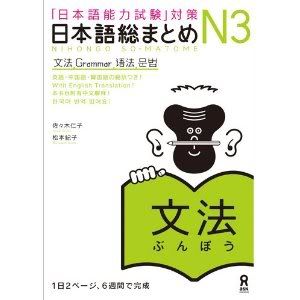
ISBN:978-4872177329

ISBN:978-4757418547
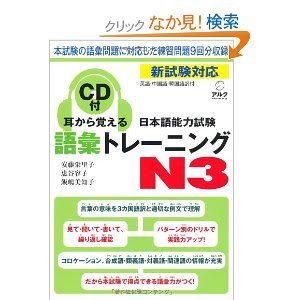
ISBN:978-4757418578
April 23, 2010
JLPT N3 Level
みなさん、こんにちは!
今日もJLPT N3について書きましょう。
I will write about JLPT N3 today too.
私の考えるN3のレベルは / N3 Level l think is :
① 漢字 / Kanji 700~800
② 語彙 / Vocabulary 3500~4000
③ 文法 / Grammars
* 旧3級の難しい文法 / difficult old 3kyu grammars
(cf : my Blog page here )
* 旧2級の易しい文法 / easier old 2kyu grammars
④ 読解 / Reading comprehension
* 旧2級の短文と中文 / old 2kyu short & middle length ones
昔のJLPTは60%で合格できました(1級は70%)。
Passing score for old JLPT was 60% (70% for 1kyu).
ちょっと厳しい意見ですが、60%ということはほとんど半分(50%)ということです。
つまり、半分理解していれば合格ができた、ということです。
It may sound a little harsh, but 60% is about half (50%), i.e. one might be able to pass it if he/she understands only half.
ですから、新しいN3のために旧3級の難しい文法をもう一度復習したほうがいいと思います。
So I thought “old 3kyu difficult grammar parts” would probably need to be reviewed for new N3 level.
旧3級/新N4 はとても大切な基本ですからね!
Old 3kyu/new N4 level is very important and basics anyway.
がんばりましょう!
April 21, 2010
Traveling in Japan
みなさん、こんにちは!
オランダの旅行会社が作った日本を紹介しているビデオです。
桜がたくさん写っていますよ。
みなさんも是非日本に来てくださいね!
This is a video made by Netherland travel agency that introduces Japan.
You will see Sakura (Cherry Blossoms) too.
It would be nice if you will come and visit Japan!
April 18, 2010
2010 New JLPT "minimum acceptable score" has not been announced yet
みなさん、こんにちは!
1月17日に新しいJLPTのことについて書きました。
JLPT Web Site に、
「得点区分の得点が一つでも基準点(現在調整中)に達していない場合は、総合得点がどんなに高くても不合格になります。」
とありますが、3カ月たちますがまだ基準点が決まっていません。
早く知りたいですね!
2010年 第1回 日本語能力試験 実施案内(国内)
(詳細)
6(1)
全科目を受験した人を対象に、総合得点と、各得点区分の基準点の二つで合否を判定し、受験者全員に合否結果通知書をもって通知します。
なお、得点区分の得点が一つでも基準点(現在調整中)に達していない場合は、総合得点がどんなに高くても不合格になります。
試験科目と得点区分は以下のように対応しています。N1、N2、N3の得点区分は「言語知識(文字・語彙・文法)」「読解」「聴解」の3区分です。
-----------------------------------------------------------------------------------------------------------
I wrote about the New JLPT on January 17th.
In JLPT WebSite says that
"Failure to exceed the minimum acceptable score (to be announced) in any scoring sections will result in a fail for the entire test, even if your total score is above the minimum acceptable score."
It's been 3 months now but still not announced yet.
We want to know it sooner!
6(1)
Guidelines for the Japanese Language Proficiency Test in 2010 (July)
(in Japan)
"Subjecting those who completed all test sections, pass or fail will be determined by the scores for both total as well as each scoring section and all examinees will receive their score reports of the Test. "
The requirements for passing have changed so that examinees must now exceed the minimum acceptable score for all test sections.
Failure to exceed the minimum acceptable score (to be announced) in any scoring sections will result in a fail for the entire test, even if your total score is above the minimum acceptable score.
Test sections and scoring sections correspond to each other as per below.
The scoring sections for N1, N2, and N3 are divided into three: Language Knowledge (Vocabulary/Grammar), Reading and Listening respectively.
April 17, 2010
東京2010年4月の雪 snow in April 2010, Tokyo
みなさん、こんにちは!
昨日の夜、東京では雪が降りました。
今日もとても寒かったです!
インターネットのニュースを読んでましょう。
都心、41年ぶりの遅い雪 強い寒気、千葉は記録更新
------------------------------------------------------------------------------
(2010年4月17日午前11時35分)
強い寒気と低気圧通過の影響で17日、関東甲信や東北南部の各地で雪やみぞれが降った。
東京都心でも早朝にうっすらと積もり、気象庁によると、これまで最も遅い積雪を記録した1969年4月17日と41年ぶりに並んだ。
- words & phrases -
都心(としん):center of a capital
41年ぶり: 41 years since the last time
寒気(かんき) : cold
千葉(ちば): Chiba prefecture
記録(きろく)更新(こうしん):record-smashing
低気圧(てきあつ):atmospheric depression
影響(えいきょう):effect
関東甲信(かんとうこうしん): Kanto and Koshinetsu districts
東北南部(とうほくなんぶ):south Tohoku region
各地(かくち):in each place
雪(ゆき): snow
みぞれ: sleet
早朝(そうちょう): early morning
うっすらと: lightly dusted (with snow)
積(つ)もる: accumulate
気象庁(きしょうちょう): meteorological bureau
最(もっと)も: the most
積雪(せきせつ): accumulated snow
並(なら)んだ: matches
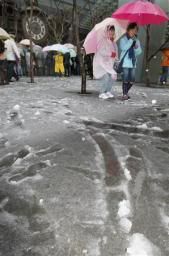
都心でうっすらと積もった雪と子どもたち
Snow falls in Tokyo, matches 1969 record for season's latest snowfall
----------------------------------------------------------------------------------------------------------
Apr 16 08:59 PM US/Eastern
TOKYO, April 17 (AP) - (Kyodo)
Snow fell in central Tokyo on Saturday as the mercury plunged, matching the 1969 record for the season's latest snowfall, the Japan Meteorological Agency said.
Snow also fell in other areas in the Kanto-Koshin regions mainly in the early hours, with 16 centimeters accumulating in Kusatsu, Gunma Prefecture, 18 cm in Karuizawa, Nagano Prefecture and 3 cm in Chichibu, Saitama Prefecture as of 5 a.m.
Saturday's snow in central Tokyo, Yokohama, Kofu in Yamanashi Prefecture and some other areas matched the record for the latest snowfall logged April 17, 1969.
April 16, 2010
JLPT N3
みなさん、こんにちは!
There was a big difference between JLPT Old Level 2 and Level 3, so N3 is a new level between them from this year.
What do you need to study/prepare for N3?
Lots of Japanese language schools are in trouble too because we have very little information, only knowing N3 is between N2 and N4 and very few books are sold.
Old Level 3 (N4) covers about 「みんなの日本語ⅠとⅡ」「Japanese For Busy People Ⅰ~Ⅲ」「げんきⅠとⅡ」.
However, if you study with Japanese for Busy People, for example, you could pass even if you didn’t study so much about the Book Ⅲ.
Therefore, maybe you should study/review the Book Ⅲfor N3.
There are lots of difficult and important grammar points in the Book Ⅲ.
For example,
「よう・そう・みたい・らしい」
「じどうし・たどうし(intransitive・transitive verbs)」
「ように・ために」
「~てあります・~ています・~ておきます」
「~ことになります・~ことにします・~ことになっています」
「うけみ (passive)」
「しえき (causative)」
「しえきうけみ(causative passive)」
「けいご (honorifics) 」
など。
These grammars are on not only on the grammar parts but also in reading comprehensions or listening parts.
For example, if it is asked which person is a boss or a subordinate judging by Keigo (honorifics), it should be very difficult.
And listening part became to 1/3 from 1/4 from this year.
N4 and N3 grammars are basics and very important.
みなさん、がんばってください!
JLPT は今まで旧2級と旧3級の間に大きな差があったので、今年から新しくN3というレベルを作りました。
N3レベルの勉強は何をすればいいでしょうか?
最近少しずつ本が発売されてきていますが、まだまだ情報が少ないので日本語学校でも困っています。
今までの3級(N4)は、「みんなの日本語ⅠとⅡ」「Japanese For Busy People Ⅰ~Ⅲ」「げんきⅠとⅡ」がテスト範囲でした。
でも実際には、たとえば「Japanese For Busy People」 の場合、BookⅢはあまり勉強しなくてもBookⅠとBookⅡをしっかり勉強しておけば、合格できました。
ですから、N3はBookⅢを復習したほうがいいでしょう。
BookⅢは難しい文法がたくさんあります。
例えば、
「よう・そう・みたい ・らしい」
「じどうし・たどうし(intransitive・transitive verbs)」
「ように・ために」
「~てあります・~ています・~ておきます」
「~ことになります・~ことにします・~ことになっています」
「うけみ (passive)」
「しえき (causative)」
「しえきうけみ(causative passive)」
「けいご (honorifics) 」
など。
このような文法は文法の問題だけではなく読解や聴解にたくさん出るでしょう。
特に聴解は1回しか聞くことができないので、難しいと思います。
例えば聴解で敬語を聞いてどちらの人が上司か部下かを考える問題などがでたらかなり難しいと思います。
そして今年から聴解が1/4から1/3になりましたね。
N4とN3は日本語文法の基礎ですから、とても大切です。
みなさん、がんばってください!
April 13, 2010
二重否定 Double Negative for JLPT N2 読解 reading comprehension
みなさん、こんにちは!
今日はN2読解の二重否定について書きます。
I will write about "double negative" for N2 level reading comprehension today.
読解文の中で二重否定が使われることがよくあります。
間違えやすいので気をつけましょう。
Double negative is often used and it is misread, so read carefully.
<重要> 二重否定の意味は肯定です。
Double negative meaning is affirmative/positive.
① ~しないことはない/~しないこともない = ~することがある (perhaps)
彼はいつも忙しいけど頼めば手伝わないこともないよ。
② ~ないとはいえない = ~かもしれない (you couldn't really say)
間に合わないとはいえない。
③ ~ないわけにはいかない/~ざるをえない = ~しなければならない (must, have to)
明日テストだから今晩勉強しないわけにはいかない。
④ ~ずにはいられない = どうしても~してしまう (cannot stop ~)
おもしろくて笑わずにはいられない。
⑤ ~ないでもない = 全然~ないのではない (not totally unable)
合格できそうな気がしないでもない。
April 3, 2010
桜が満開!花見客でにぎわう東京・上野公園
みなさん、こんにちは!
今日はインターネットのニュースを読みましょう。
桜が満開!花見客でにぎわう東京・上野公園
- 2010年4月3日 12:35 -
この週末は桜が満開となり、東京・台東区の上野公園も多くの花見客でにぎわっている。
3日の関東地方は、強風が吹き荒れた2日から一転して穏やかな花見日和となった。
上野公園も桜が満開で、約670本のソメイヨシノが園内をピンク色に染め上げている。
多くの人が思い思いにカメラに収めたり、ブルーシートと料理を持ち寄ったりして満開の桜を楽しんだ。
上野公園によると、ここ数日は一日10万人以上が訪れていて、3日はそれ以上の来場が見込まれるという。
- words & phrase -
この週末(しゅうまつ): this weekend
桜(さくら)が満開(まんかい): Sakura (Cherry Blossoms) are in full bloom
台東区(たいとうく): Taito Ward
上野公園(うえのこうえん): Ueno Park
多(おお)くの花見客(はなみきゃく): lots of people viewing Sakura
にぎわう: bustle, busy
関東(かんとう)地方(ちほう): Kanto Region
強風(きょうふう): strong wind
吹(ふ)き荒(あ)れた: swept
一転(いってん)して: in reversal
穏(おだ)やかな: calm
花見(はなみ)日和(びより): an ideal/perfect day for Sakura viewing
ソメイヨシノ: Someiyoshino, the most famous kind of Sakura
園内(えんない): in the park
染(そ)め上(あ)げる: paint
思(おも)い思(おも)いに: in their own way
カメラに収(おさ)める: take photos
ブルーシート: sheets for picnic
料理(りょうり): foods
持(も)ち寄(よ)る: potluck
楽(たの)しんだ: enjoyed
ここ数日(すうじつ): these days
一日(いちにち)10万人(まんにん)以上(いじょう): over 100,000 people per day
訪(おとず)れている: come and visit
来場(らいじょう): visit, visitors
見込(みこ)まれる: expected
April 2, 2010
Cherry blossoms reach peak bloom in Tokyo ソメイヨシノ:東京で一気に満開…平年より4日早く
みなさん、こんにちは!
昨日4月1日のニュースです。
TOKYO, April 1 (AP) - (Kyodo) -
Cherry blossoms reach peak bloom in Tokyo
Cherry blossoms in central Tokyo have been in full bloom four days earlier than usual and a day earlier than last year, the Japan Meteorological Agency said Thursday.
The agency said its officials confirmed the "someiyoshino" cherry tree at Tokyo's Yasukuni Shrine, designated as the agency's "sample tree," has bloomed by around 90 percent, fulfilling the 80 percent requirement the agency sets to declare it in full bloom.
Thursday became a warm, sunny day in the area as warm air moved in from the southwest, according to the agency.
With no forecasts of rain over the coming weekend, areas known for their cherry blossoms are likely to attract many visitors.
The cherry blossoms in Kyoto also reached their peak while those in Maebashi, Gunma Prefecture, and Kanazawa, Ishikawa Prefecture, just began to bloom.
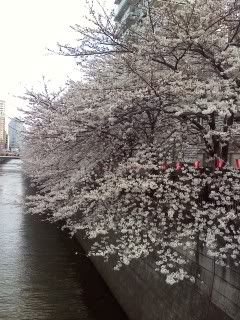

The phoes are I took near my place today, April 1st.
ソメイヨシノ : 東京で一気に満開…平年より4日早く
2010年4月1日 19時30分 更新:4月1日 19時51分
気象庁は1日、東京の桜(ソメイヨシノ)が満開になったと発表した。
平年より4日早く、昨年より1日早い。3月22日の開花から10日で満開となった。
満開は「標本木」で8割以上が開花した状態を指す。気象庁職員が1日午後2時ごろ、千代田区の靖国神社境内にある標本木を確認したところ、約9割が開花していた。
前日は6割程度の開花だったが、1日は東京の最高気温が4月下旬並みの20.7度まで上がり、一気に開花が進んだ。
2日は雨の見込みだが、週末は天気が回復し花見日和になりそうだ。
- words & phrase -
ソメイヨシノ: someiyoshino is the most common type of cherry trees in Japan
一気(いっき)に: all at once
満開(まんかい): full bloom
平年(へいねん): an average year
更新(こうしん): update
気象庁(きしょうちょう): the Meteorological Agency
桜(さくら): Sakura, Cherry Blossoms
発表(はっぴょう)した: announced
昨年(さくねん): last year
早(はや)い: early
開花(かいか): to bloom
標本木(ひょうほんぼく): sample trees
8割(わり)以上(いじょう): over 80 %
状態(じょうたい): condition, situation
指(さ)す: mean
職員(しょくいん): staff member
千代田区(ちよだく): Chiyoda Ward
靖国神社(やすくにじんじゃ):Yasukuni Shrine
境内(けいだい): the precincts of a temple/shrine
確認(かくにん): confirm, check
約(やく): about
前日(ぜんじつ): the day before
程度(ていど): degree
最高(さいこう)気温(きおん): highest temperature
4月(がつ)下旬(げじゅん)並(な)み: about the same as the end of April
進(すす)んだ: proceeded, went forward
見込(みこ)み: possibility
天気(てんき)が回復(かいふく)し: the weather will get better
花見(はなみ)日和(びより): an ideal day for Hanami (watching Cherry Blossoms)
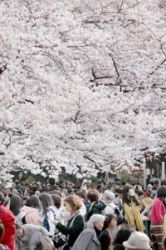
毎日jp News
Subscribe to:
Posts (Atom)




